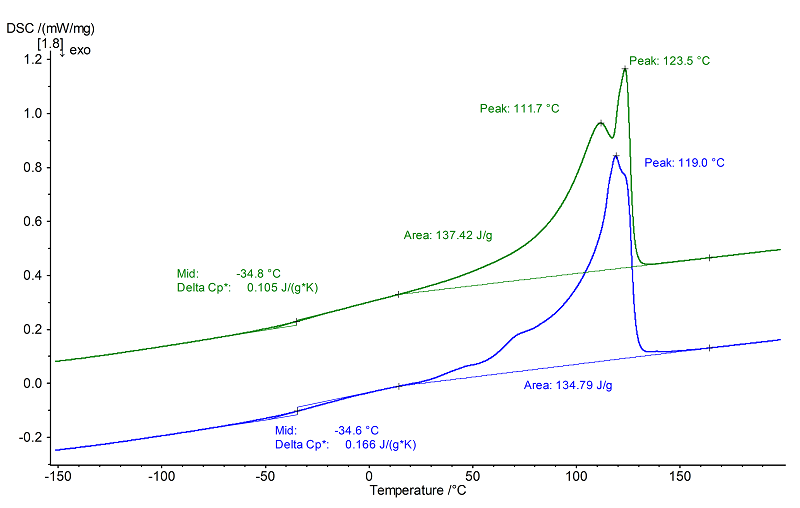PE-LLD: Polyethylene linear low density
- Short Name
- PE-LLD
- Name
- Polyethylene linear low density
- Group
- CTP - Commodity Thermoplastics
- General Properties
- Chemical Formula
- Structural Formula
-

Properties
- Glass Transition Temperature
- -130 to -100 / -70 to -25 °C
- Melting Temperature
- 122 to 127 °C
- Melting Enthalpy
- - J/g
- Decomposition Temperature
- 475 to 485 °C
- Young's Modulus
- 250 to 700 MPa
- Coefficient of Linear Thermal Expansion
- 200 *10¯6/K
- Specific Heat Capacity
- - J/(g*K)
- Thermal Conductivity
- - W/(m*K)
- Density
- 0.91 to 0.94 g/cm³
- Morphology
- Semi-crystalline thermoplastic
- General properties
- Balanced relationship of toughness and stiffness, good chemical resistance, good electrical insulating properties.
- Processing
- Extrusion (films, profiles), injection moulding, blow moulding, extrusion-coating.
- Applications
- Films (allows for lower film thickness than PE-LD), mainly in household and agriculture, packaging (e.g. containers and plastic bags), toys.
Internet Links
NETZSCH Measurements
- Instrument
- DSC 204 F1 Phoenix®
- Sample Mass
- 11.95 mg
- Isothermal Phase
- 20 min/2 min/20 min
- Heating/Colling Rates
- 10 K/min
- Crucible
- Al, pierced
- Atmosphere
- N2 (40 ml/min)

Evaluation
The 1st heating (blue) exhibits a highly structured melting endotherm with a main peak (at 119°C) and several upstream and downstream shoulders, reflecting the presence of stresses (thermomechanical history).
In the 2nd heating (green), two peaks at approx. 112°C and 124°C remained. Due to side chain branching, different melting phases are formed which melt one after the other. The corresponding melting enthalpy in the 2nd heating amounts to approx. 137 J/g. Since PE-LLD is a semi-crystalline thermoplastic, the glass transition observed at -35°C (for both heatings) can be related to the amorphous component of the polymer.
A second possible glass transition at approx. -100°C to -130°C, which could be due to the different crystallite structures, is not viewable in the plots shown.
In the 2nd heating (green), two peaks at approx. 112°C and 124°C remained. Due to side chain branching, different melting phases are formed which melt one after the other. The corresponding melting enthalpy in the 2nd heating amounts to approx. 137 J/g. Since PE-LLD is a semi-crystalline thermoplastic, the glass transition observed at -35°C (for both heatings) can be related to the amorphous component of the polymer.
A second possible glass transition at approx. -100°C to -130°C, which could be due to the different crystallite structures, is not viewable in the plots shown.